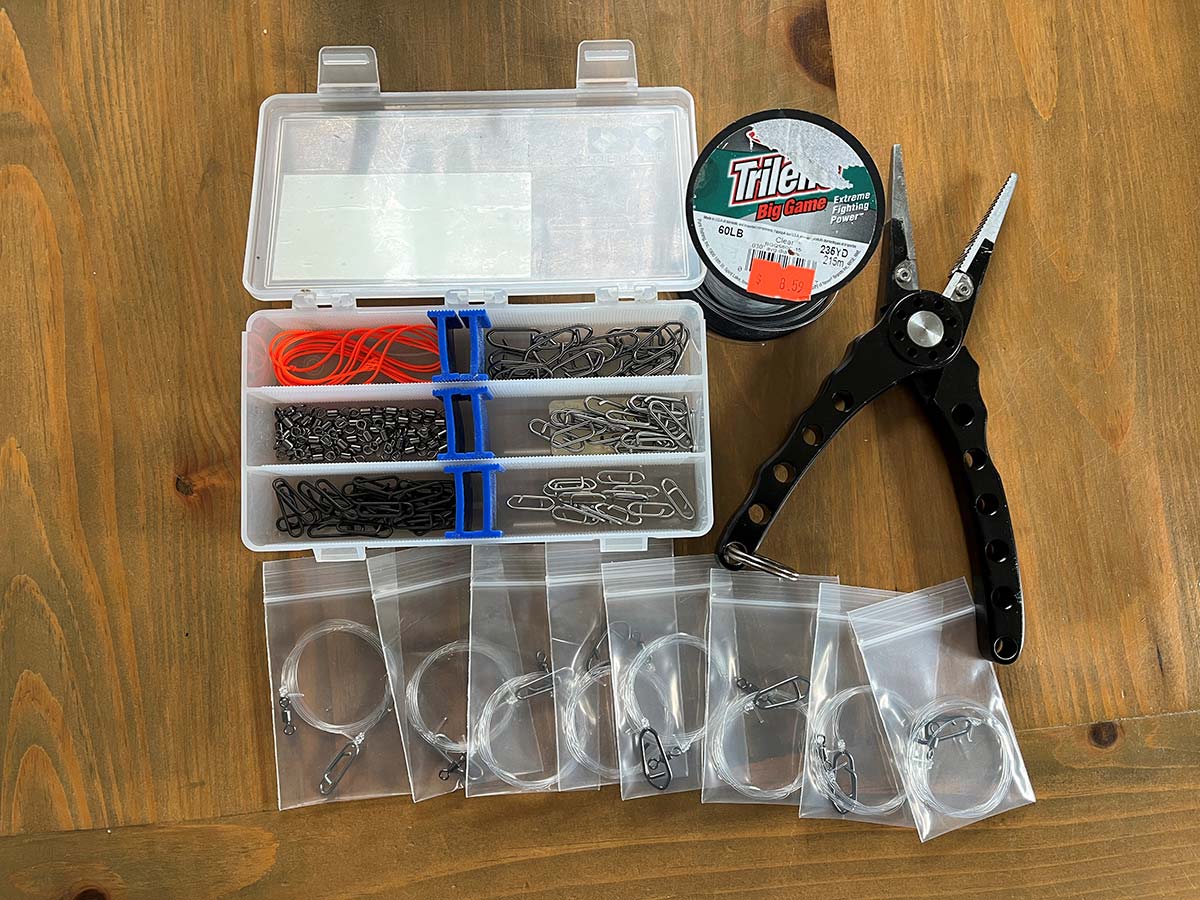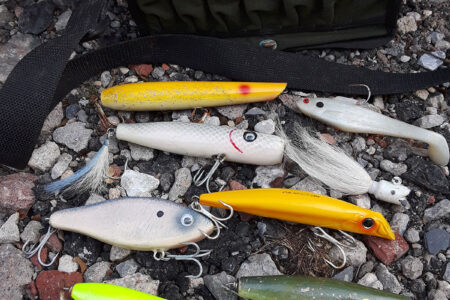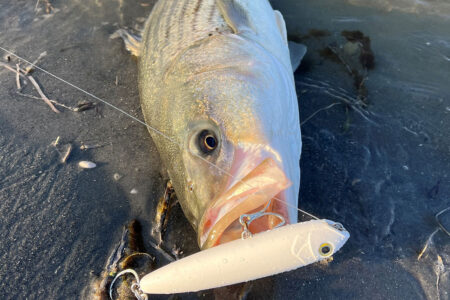
Leaders are your last and best line of defense for keeping that fish of your dreams on the hook.
This may sound like a boring topic, but you can’t argue with the fact there are few occurrences that can make a surfcaster feel more naked than realizing he or she is out of leaders in the midst of a hot bite. And, take it from me, you don’t want be trying to re-tie the ‘best’ of your frayed leaders in the dark, that move cost me a fish that will haunt me to my grave.
One of the best things I ever did for my efficiency as a surfcaster was measure out my perfect leader length. Is there anything more frustrating than trying to fish with a leader that’s 3 inches too long? It drives me nuts. My magic number is 38. And I keep a piece of Dacron in my leader tying kit cut to 44 inches with a knot at 38 inches so that I’m always right around that perfect length.
Make A Kit
My kit is a small Plano box that contains Spro Power Swivels in sizes 4 and 6, TA Clips in the 50- and 75-pound size and Spro Prime Snaps in the 125-pound size. I keep that in a small toolbox that contains various types of leader materials, from 10-pound fluoro to 80-pound mono and a pair of inexpensive fishing pliers with a pair of carbide side cutters. I chose a pair of pliers with holes in the handles so that I could add a large key ring, basically a mammoth split ring, that I feel is an integral part of tying reliable knots.
The Process
I start by lining the end of my Dacron ‘measuring cord’ with the end of the leader material coming off the spool, I then pull them both through my fingers until I reach the end of the Dacron and I cut it there with the pliers. Next I tie on my swivel, if I’m tying leader material of 40-pound test or higher, I use a very simple ‘unimproved’ clinch knot, four times around the main line and back through the bottom. Before I cinch the knot down though, I thread it onto that key ring on my pliers and lube it up with some saliva. This gives me a firm hold on the swivel and allows me to pull the knot a lot tighter than I could with just my fingers. Then I use the Dacron again, pulling from the swivel until I feel the knot in a Dacron, and I tie my snap on at that position, using the same knot and the key ring to finish it. When I’m tying heavier mono (80 pounds or more) I use a uni knot, when I tie lighter mono (30 pounds and under) I use an improved clinch knot. (And, in case you’re wondering, I use a Palomar knot 100% of the time when tying my swivel to my braided line.) Each finished leader is then coiled and placed inside its own 2- by 3-inch Ziploc bag.
Leader Thoughts
When I’m fishing the surf, I almost always use 60-pound mono leaders, I haven’t been able to find a reason to use fluorocarbon for striped bass fishing. I will carry two or three leaders tied with 40-pound mono for nights when the fish are finicky or when there’s fire in the water (bioluminescent algae). I use the 60-pound leaders because I’m usually fishing in rocky terrain, if I was fishing sandy beaches I would drop down to 40 all the time. I use all those different snaps because many lighter plugs are adversely affected by the larger, heavier snaps. When I’m fishing for fish that are known to be leader shy like albies, trout and other heavily pressured freshwater fish, I will use fluorocarbon and I typically have spools of fluoro ranging from 8- to 30-pound test in my kit.
Leaders are an afterthought for too many surfcasters. They are your last and best line of defense in the unforgiving ocean, especially when you’re hooked up to the fish of a lifetime. That leader is not only there to ‘hide your braid’ it’s also there because it can take the punishment that your braid just can’t. Taking the extra time to seat your knots and having lighter options for lures that require finesse or when fire in the water is making the fish finicky are the tricks that might set you apart from the rest.



